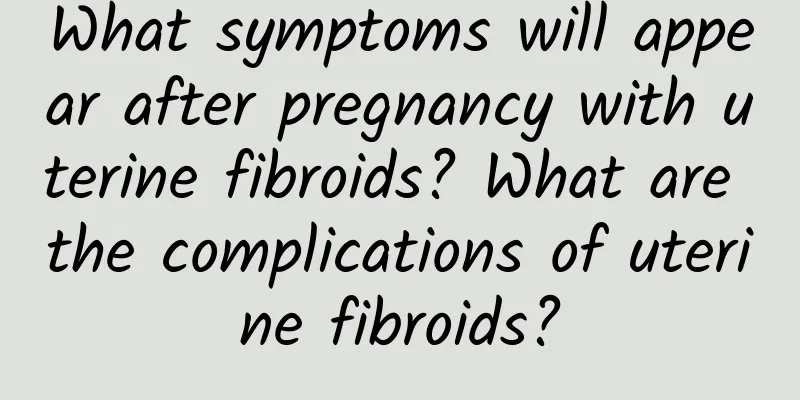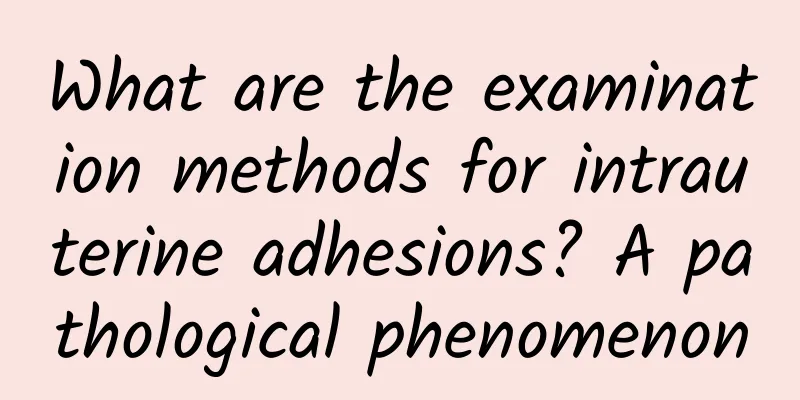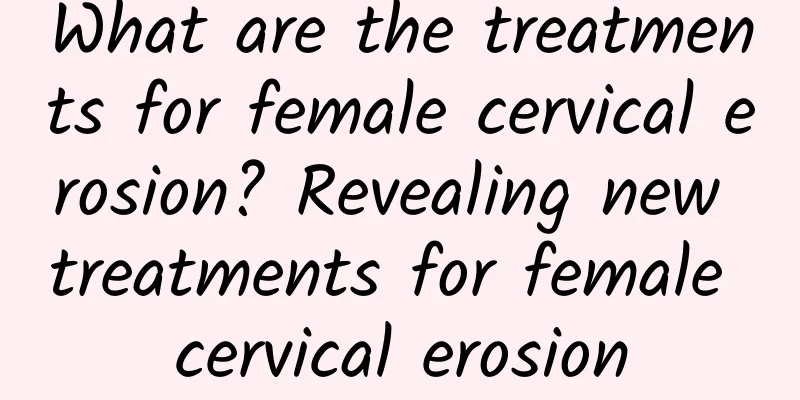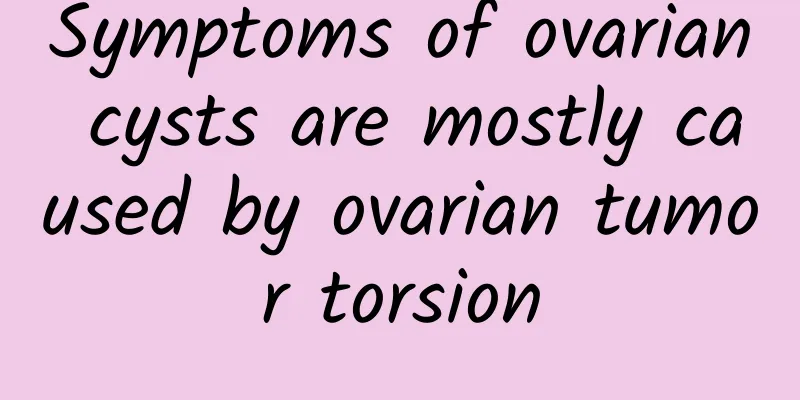What symptoms will appear after pregnancy with uterine fibroids? What are the complications of uterine fibroids?

|
Women with uterine fibroids are physically fragile, and a little carelessness can lead to serious consequences. However, some female friends still do not understand uterine fibroids, do not know their harm and causes, and let uterine fibroids worsen. The ultimate harm is to the patient herself. So, what are the complications of pregnancy with uterine fibroids? Uterine fibroids are the most common benign tumors of the female reproductive system. Fibroids can affect the entry of sperm into the uterine cavity. Submucosal fibroids can easily infect the endometrium, which is not conducive to the implantation of the pregnant egg. Huge multiple uterine fibroids can easily squeeze the interstitial part of the fallopian tube, hindering the passage of sperm, which can lead to infertility and have a certain impact on female fertility. Even if the patient survives after having difficulty getting pregnant, the incidence of spontaneous abortion in pregnancy with fibroids is about 20%. Fibroids affect the implantation of the gestational egg and the development of the placenta, leading to placenta previa, placental abruption, and placental adhesion. If the fibroids restrict the movement of the fetus in the uterus, the fetal position will be abnormal; if the fibroids hinder the connection of the fetus to be exposed first, the fetal membranes will rupture prematurely. The incidence of bleeding from fibroids in the late placental period is high. Uterine fibroids grow slowly and are painless. Once clinical pain symptoms occur, they are mainly caused by complications of fibroids. For some patients who experience pain for the first time, the cause should be found out based on their clinical symptoms and signs. Complications of fibroids include red degeneration, infection, and torsion. Uterine fibroid torsion mainly occurs in subserosal fibroids. Generally speaking, fibroids are short and thick. Although they can be twisted, their incidence is much lower than that of ovarian cyst pedicle torsion. Occasionally, huge subserosal uterine fibroids can be complicated by uterine torsion. After the fibroid pedicle is twisted, the patient suddenly experiences lower abdominal pain and twisting pain. If the tumor is embedded in the pelvic cavity after twisting, there may be a feeling of suffocation in the lower abdomen. Examination of the lower abdomen can palpate the tumor, and there is tenderness, with tenderness being the most obvious. Vaginal examination shows that the uterus is normal or enlarged, and the tumor can be palpated on the surface of the uterus. Sometimes the fibroid is biased to one side of the uterus, making it difficult to identify the torsion of the ovarian tumor pedicle. B-ultrasound examination can help distinguish the source of the tumor. Generally, there is no fever. If there is secondary infection over time, there may be fever. Once diagnosed, surgical treatment is required. |
<<: Do uterine fibroids affect pregnancy? Can uterine fibroids cause infertility?
>>: Uterine fibroids How to treat uterine fibroids during pregnancy
Recommend
Is ovarian cyst a serious disease?
Is an ovarian cyst a serious condition? 1. Ovaria...
Seven typical types of vaginitis
People have not given up the study of vaginitis, ...
How much does ovarian cyst surgery cost?
How much does ovarian cyst surgery cost? Generall...
Constipation cannot be treated by eating only fiber foods! Nutritionist Gao Minmin recommends: 4381+1/3 bowel cleansing and detoxification diet
I'm constipated again, it's really bother...
What are the causes of irregular menstruation?
What is the reason for irregular menstruation? Ir...
Can ovarian cysts affect menstruation?
Ovarian cyst is a common gynecological disease th...
Doctors suggest: Girls should also undergo gynecological examinations
Generally speaking, women who have sex should hav...
What are the early symptoms of ectopic pregnancy?
What are the early symptoms of ectopic pregnancy?...
How long does it take to have normal menstruation after a miscarriage? What are the reasons for delayed menstruation after a miscarriage?
The question that people who have had miscarriage...
What are the symptoms of premature ovarian failure
What are the symptoms of premature ovarian failur...
Precautions before ectopic pregnancy surgery
What are the precautions before ectopic pregnancy...
Let's see what causes a decrease in menstrual flow?
Reduced menstrual volume is a common disease, and...
Treatment of incomplete or missed aspiration of the uterus during abortion
Artificial abortion, also known as artificial abo...
Reasons for irregular menstruation and heavy menstrual flow with blood clots in women
Everyone wants to have a healthy body, but there ...
Ovarian cyst prevention tips
The prevention of ovarian cysts is knowledge that...









